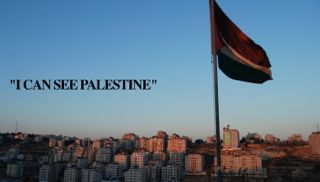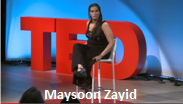An important dimension of the Israeli-Palestinian conflict, and one that has been extensively
documented, concerns Israel’s control over the movement of Palestinian people, goods,
and resources. Since 1967, control over Palestinian movement has relaxed and tightened,
following in part the ebb and flow of the conflict. Over time, however, the apparatus of
control itself has gradually become more sophisticated and effective in its ability to interfere
in and affect every aspect of Palestinian life, including job opportunities, work, and earnings.
Extensive and multilayered, the apparatus of control includes a permit system, physical
obstacles known as closures, restricted roads, prohibitions on entering large areas of land in
the West Bank, and most notably the Separation Barrier. It has turned the West Bank into
a fragmented set of social and economic islands or enclaves cut off from one another. It
has surrounded Gaza with a perimeter fence with heavily controlled crossings. This report
assesses the impact of the movement and access regime in the period 2000–07 on the
economy and the working lives of Palestinians, exploring the gender dimension of restrictions
on labor force participation, and how new tensions in the arena of work resulting from
movement and access restrictions have affected relations between women and men. The
findings of this study are based on an analysis of data covering the years 2000 to 2007 and
examine the long-term impacts of restrictions on movement and access.
As controls on movement became more entrenched following the second intifada (2000),
a massive economic decline ensued, leading to a drop in male employment and real wages
resulting from job losses in Israel, and a corresponding rise in unemployment. Poverty rates,
including deep poverty rates, rose as gross domestic product (GDP) fell, and increasing
numbers of households found themselves living on food handouts and devising endless
coping mechanisms to make ends meet. Thus, the West Bank and Gaza—in the span of
a decade—moved from being a middle-income economy to one that is now massively aid
dependent. This same period also witnessed a sharp rise in both covert and overt forms
of violence. Israeli military incursions, detentions, manned checkpoints, home demolitions,
the Separation Barrier (along with its associated permit regime), and the Palestinians’ own
response spun a web of violence in public and private that touched the everyday lives of all
Palestinians. The violence resulting from the occupation has led to loss of life, land, property,
and free movement of people, and has fragmented social space, a key source of material
and moral support especially for women. With neither Israeli nor Palestinian legal systems
able to provide defense or protection, these momentous changes in people’s everyday lives
created a sense of collapse of the public, social, and moral order (falataan amni).
Against this backdrop, the effects on Palestinian society have been extensive and far
reaching, on relations between men and women, on intergenerational relations between the
young and the old, on ties of kinship, and on social networks. This study, through qualitative
sources, provides insights into a chain of events that have and are moderating social behavior and gender relations associated with work. The study also captures what the deteriorating
situation has meant for Palestinian females and males of all ages in terms of their economic
engagement, their ability to seek alternate livelihoods, their coping strategies, their social
and human investments (for example, education, marriage), and their future aspirations.
As the study shows, men’s role as the primary provider and protector of the family, traditionally
a mainstay of Palestinian gender relations, has been systematically undermined by economic
collapse. With the shrinking of the Israeli market for Palestinian labor and the contraction
of the productive sectors of the Palestinian economy experienced over the last seven years,
men have retreated from the labor market for lack of opportunities. With barely any options
available to them, they have flocked to the informal sector, borrowing and starting small
businesses to make up for the loss of employment and income, but the success of this
strategy has been limited. Movement and access restrictions have stymied the absorptive
capacity of the private sector in both the West Bank and Gaza and the ability to trade, and
many businesses have been forced to fold.
On the whole, men’s labor force participation never returned to the pre-crisis levels of 1999,
suggesting that many men are delaying entry into the labor market or are too discouraged
to stay in. In 2007, nearly 60 percent of working-age Palestinians neither participated in
any type of recorded economic activity, paid or unpaid, nor were searching for work.1 This
desperation was expressed during focus group discussions conducted as part of this study.
Men from refugee camps who lost their jobs in Israel complained about spending most of
their time idle, except for occasional piecemeal work offered to them by neighbors or by
job creation programs. These men also spoke about having become increasingly reliant on
humanitarian aid from the United Nations Relief and Works Agency (UNRWA) and other
charitable associations. Men with small plots of land around their homes have turned to
planting crops and raising poultry or livestock, but these activities are insufficient to sustain
their families.
To download the full report please click below:
| Attachment | Size |
|---|---|
| 26882853-WB-Gender-Report-ENG-Feb16-10.pdf | 4.83 MB |
World Bank – Sustainable Development Department Middle East and North Africa Region - February 16, 2010 - Back to Resources Page
Did we miss something?
Click here to suggest a state building resource to be added to our fast-growing archive!
















